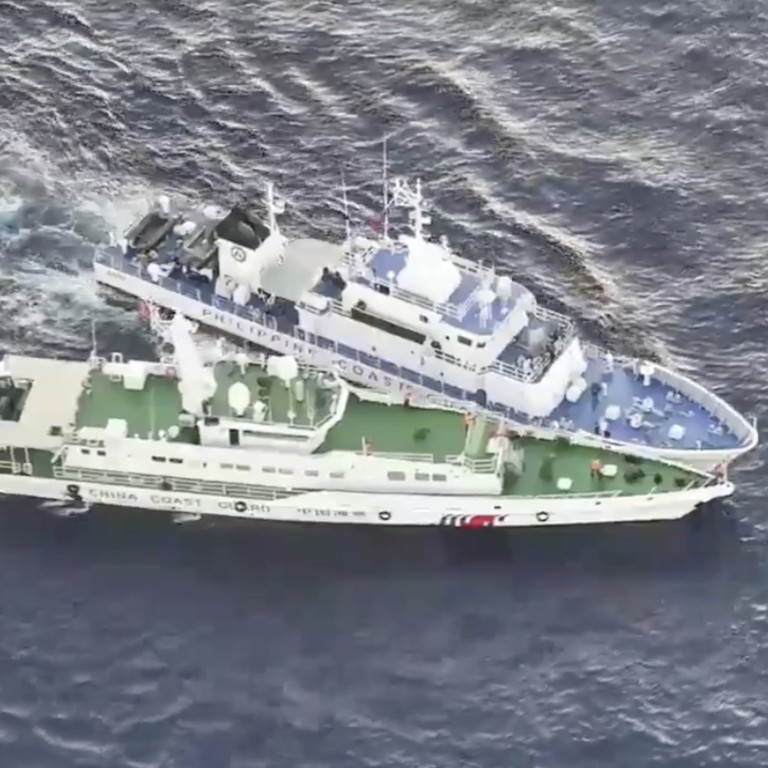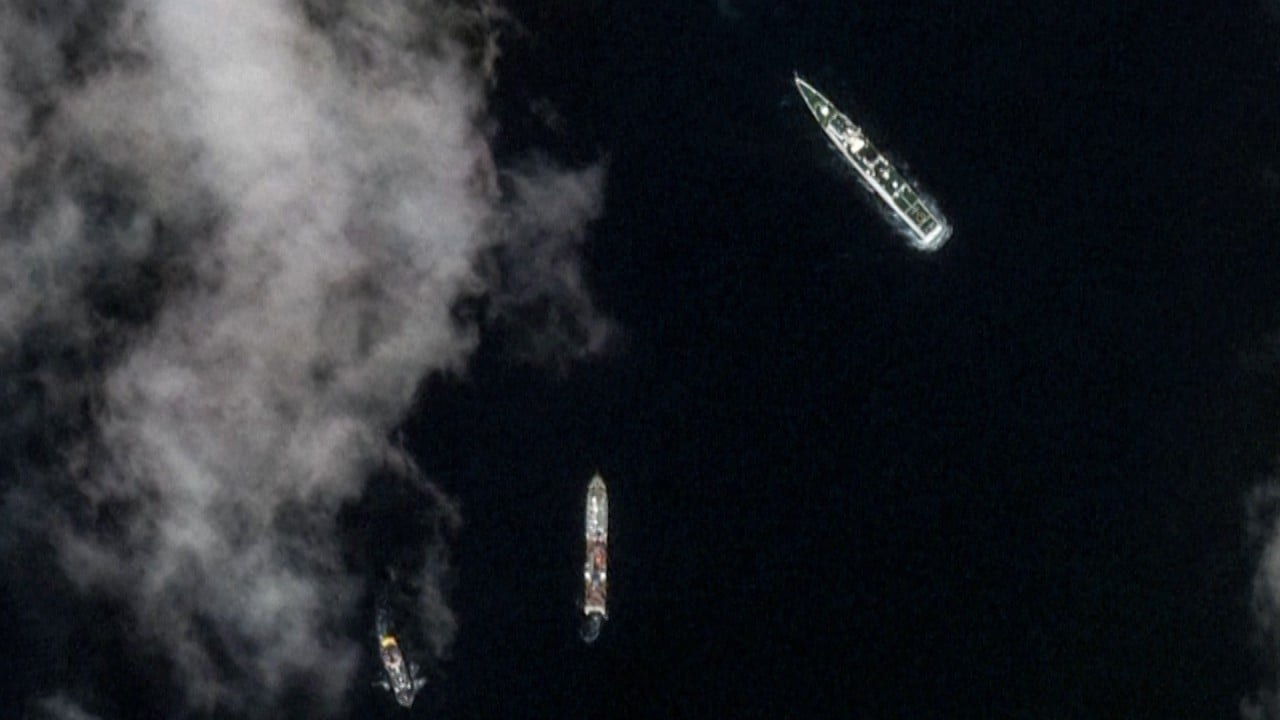
South China Sea: China and the Philippines blame each other for latest collision in disputed Second Thomas Shoal
- Beijing says a Philippine coastguard vessel ‘deliberately rammed’ one of its ships near the disputed reef
- But Manila hit back saying it was the result of China’s ‘reckless and illegal’ actions while its ships were trying to resupply troops stationed on a grounded warship
Manila blamed the incident near the Philippine-held Second Thomas Shoal on China’s “reckless and illegal” behaviour but Gan Yu, a spokesman for the Chinese coastguard, said the Philippines had “violated its commitments and deliberately sent two coastguard ships and two supply ships” to the area.
Gan said the Philippine vessel “ignored China’s repeated warnings, violated the International Regulations for Preventing Collisions at Sea, and deliberately rammed into China’s coastguard vessel”.
“The Philippines is dishonest in its dialogue, deliberately stirs up trouble, maliciously incites and sensationalises, and continues to undermine peace and stability in the South China Sea region,” Gan said.
“The China Coast Guard is always ready to resolutely respond to any infringement and provocation at any time, and resolutely safeguard the country’s territorial sovereignty and maritime rights and interests.”
South China Sea: ‘stop harassing us’, Philippines foreign minister urges Beijing
In response, the Philippine coastguard said two of its vessels – BRP Cabra and BRP Sindangan – had been sent to bring supplies to troops stationed on a second world war warship that has been grounded on the reef when the incident occurred.
Commodore Jay Tarriela, a spokesman for the Philippine coastguard, posted on X, formerly Twitter, that the Philippine ships “faced dangerous manoeuvres and blocking” from the Chinese coastguard and maritime militia throughout the incident.
“Their reckless and illegal actions led to a collision between [BRP Sindangan] and China Coast Guard 21555 that resulted in minor structural damage to the vessel,” he said.
The Chinese foreign ministry said it had “lodged stern representations with the Philippines and made a strong protest”, adding that Beijing’s position on the Second Thomas Shoal was “consistent and clear”.
“China once again urges the Philippines to stop maritime infringements and provocations and not to take any actions that may complicate the maritime situation,” Mao Ning, a spokeswoman for the ministry, said.
Second Thomas Shoal – known as Renai Reef in China and Ayungin Shoal in the Philippines – is controlled by Manila but also claimed by Beijing, Taipei and Hanoi. It is within the Philippines’ exclusive economic zone, about 190km (120 miles) from the island of Palawan.
The Philippines has outposts on nine reefs and islands in the Spratly Islands – called Nansha in Chinese – including Second Thomas Shoal.
The atoll has become a flashpoint between China and the Philippines in recent months, following a string of incidents including other collisions and the use of water cannons against Philippine ships.
Beijing claims almost the entire South China Sea, including the Spratlys, where the Philippines and other Southeast Asian nations have overlapping claims.
China rejected an international ruling in 2016 that its territorial and maritime claims have no legal basis and has continued to build outposts on islands and atolls that it controls.
“Our independent foreign policy compels us to cooperate with [China] on matters where our interests align, to respectfully disagree on areas where our views differ, and to push back when our sworn principles such as our sovereignty, our sovereign rights, and our jurisdiction … are questioned or ignored,” Marcos said.
Beijing flexes muscles in South China Sea as Manila puts it on the defensive
“Our forces must be able to guarantee to the fullest extent possible … unimpeded and peaceful exploration and exploitation of all natural resources in areas where we have jurisdiction, including … our exclusive economic zone.”
Since Marcos came to power in 2022, Manila has been pursuing closer ties with its traditional ally, the United States.
Last month, the two countries staged a joint air patrol over the South China Sea, which were monitored by the People’s Liberation Army.


